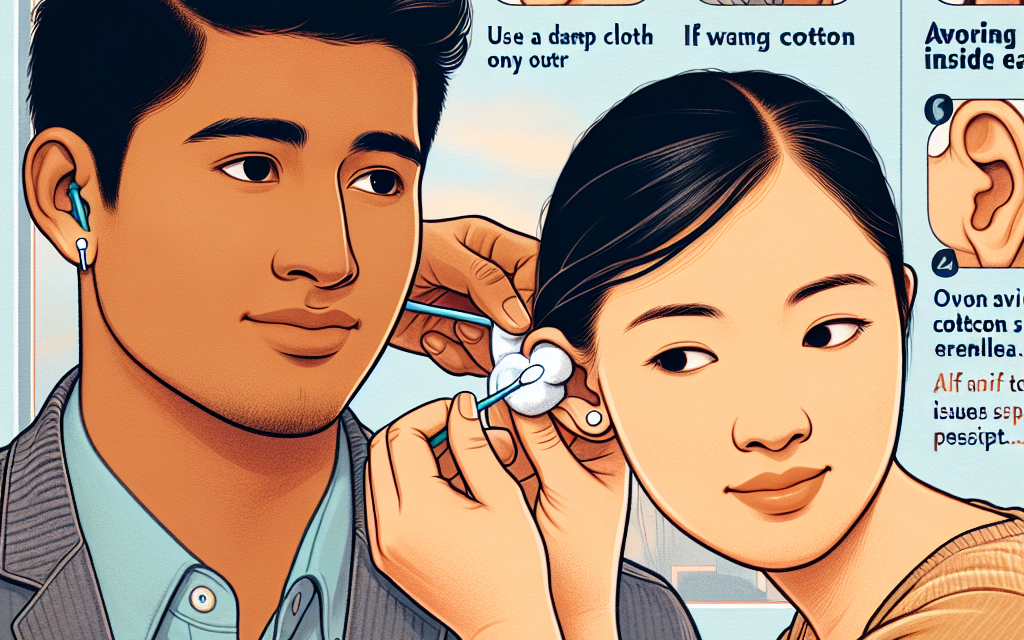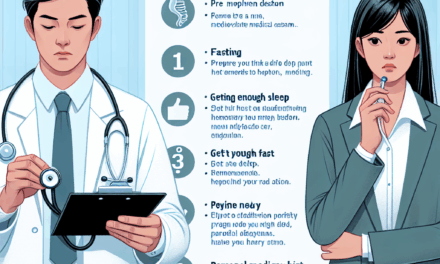Tips for Safe and Effective Ear Hygiene Practices
Ear hygiene is an essential aspect of personal care that is often overlooked. The ears play a crucial role in our ability to hear and maintain balance, making it vital to keep them clean and healthy. However, improper ear hygiene can lead to various issues, including infections, hearing loss, and discomfort. This article will explore safe and effective ear hygiene practices, providing valuable insights and tips to help you maintain optimal ear health.
Understanding Ear Anatomy and Function
Before diving into ear hygiene practices, it is essential to understand the anatomy and function of the ear. The ear is divided into three main parts: the outer ear, middle ear, and inner ear.
- Outer Ear: This includes the visible part of the ear (pinna) and the ear canal. The outer ear collects sound waves and directs them toward the eardrum.
- Middle Ear: This section contains the eardrum and three tiny bones (ossicles) that amplify sound vibrations. The middle ear is connected to the throat via the Eustachian tube, which helps equalize pressure.
- Inner Ear: The inner ear contains the cochlea, which converts sound vibrations into electrical signals sent to the brain. It also includes the vestibular system, responsible for balance.
Understanding this anatomy is crucial because it highlights the importance of maintaining ear hygiene. Neglecting ear care can lead to blockages, infections, and other complications that affect hearing and balance.
Common Ear Hygiene Myths
Many misconceptions surround ear hygiene, leading to improper practices that can harm rather than help. Here are some common myths debunked:
- Myth 1: Cotton Swabs are Safe for Cleaning Ears: Many people use cotton swabs to clean their ears, believing they are effective. However, this practice can push wax deeper into the ear canal, leading to blockages and potential damage to the eardrum.
- Myth 2: Ear Wax is Unhygienic: Ear wax, or cerumen, serves a protective function by trapping dust and debris and preventing infections. It is a natural substance that should not be completely removed.
- Myth 3: You Should Clean Your Ears Daily: The ears are self-cleaning organs. Over-cleaning can irritate the skin in the ear canal and lead to infections.
- Myth 4: All Ear Cleaning Products are Safe: Many over-the-counter ear cleaning solutions can be harmful. It is essential to consult a healthcare professional before using any products.
- Myth 5: Hearing Loss is Inevitable with Age: While age-related hearing loss is common, proper ear hygiene and protection can help preserve hearing health.
By debunking these myths, individuals can adopt safer and more effective ear hygiene practices that promote overall ear health.
Safe Ear Cleaning Techniques
Cleaning your ears safely is crucial to prevent damage and maintain ear health. Here are some recommended techniques:
- 1. Use a Damp Cloth: For cleaning the outer ear, a damp cloth is sufficient. Gently wipe the outer ear and the area around the ear canal without inserting anything into the ear.
- 2. Avoid Inserting Objects: Never insert cotton swabs, fingers, or other objects into the ear canal. This can push wax deeper and cause injury.
- 3. Use Ear Drops if Necessary: If you experience excessive ear wax buildup, consider using over-the-counter ear drops designed to soften wax. Follow the instructions carefully.
- 4. Seek Professional Help: If you suspect a blockage or have concerns about your ear health, consult an audiologist or an ear, nose, and throat (ENT) specialist for safe removal.
- 5. Regular Check-ups: Schedule regular check-ups with a healthcare provider to monitor ear health and address any concerns promptly.
These techniques emphasize the importance of gentle care and professional guidance in maintaining ear hygiene. By following these practices, you can minimize the risk of injury and ensure your ears remain healthy.
Recognizing Signs of Ear Problems
Being aware of potential ear problems is crucial for early intervention. Here are some common signs that may indicate an issue:
- Pain or Discomfort: Persistent pain in the ear can signal an infection or other underlying issues. Do not ignore this symptom.
- Hearing Loss: Sudden or gradual hearing loss may indicate a blockage, infection, or other conditions that require medical attention.
- Discharge: Any unusual discharge from the ear, especially if it is accompanied by pain or odor, should be evaluated by a healthcare professional.
- Tinnitus: Ringing or buzzing in the ears (tinnitus) can be a sign of various conditions, including exposure to loud noises or earwax buildup.
- Itching or Irritation: Persistent itching or irritation in the ear canal may indicate an infection or allergic reaction.
If you experience any of these symptoms, it is essential to seek medical advice promptly. Early diagnosis and treatment can prevent complications and preserve hearing health.
Preventive Measures for Ear Health
Preventing ear problems is often more effective than treating them. Here are some preventive measures to consider:
- 1. Protect Your Ears from Loud Noises: Exposure to loud sounds can damage hearing. Use earplugs or noise-canceling headphones in loud environments.
- 2. Avoid Water Exposure: If you are prone to ear infections, consider using earplugs while swimming or bathing to prevent water from entering the ear canal.
- 3. Maintain Good Hygiene: Wash your hands regularly and avoid touching your ears with dirty hands to reduce the risk of infections.
- 4. Manage Allergies: Allergies can lead to ear problems. Manage your allergies with appropriate medications and consult a healthcare provider if necessary.
- 5. Stay Hydrated: Proper hydration helps maintain overall health, including ear health. Drink plenty of water to keep mucous membranes moist.
By incorporating these preventive measures into your routine, you can significantly reduce the risk of ear problems and maintain optimal ear health.
Conclusion
Maintaining safe and effective ear hygiene practices is essential for preserving hearing and preventing infections. Understanding ear anatomy, debunking common myths, employing safe cleaning techniques, recognizing signs of ear problems, and implementing preventive measures are all crucial components of ear care. By following the tips outlined in this article, you can ensure your ears remain healthy and functional throughout your life.
Remember, if you have any concerns about your ear health, it is always best to consult a healthcare professional for personalized advice and treatment. Your ears are vital to your overall well-being, so take the necessary steps to care for them properly.





